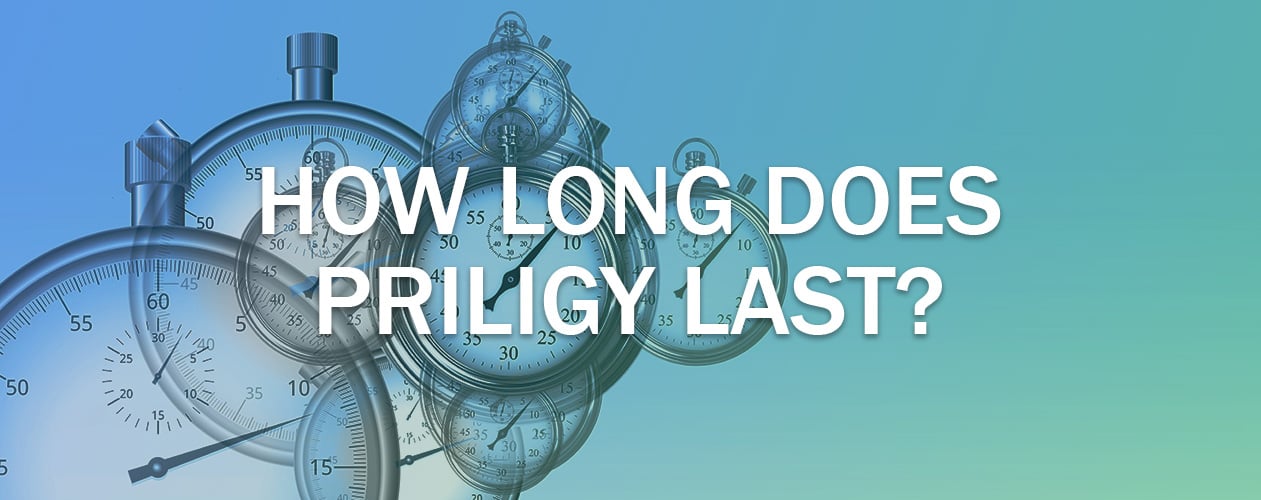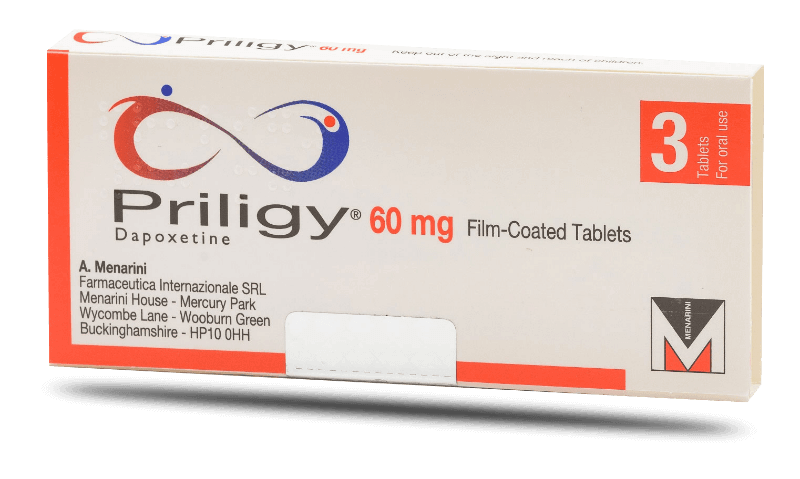How Long Does Priligy Last?

Sexual dysfunction, including premature ejaculation (PE, the most common form of sexual dysfunction) must be very well understood in order to prevent the negative impact on both men and their partners.
PE may be connected to many things, for example:
• Erectile dysfunction (ED) – when a man can’t keep an erection firm enough for sex
• Thyroid disorders
• Prostatitis – it may be a bacterial, non-bacterial, acute or chronic condition
• Chronic pelvic pain syndrome – a collection of conditions that can include spasms, bladder and/or rectal pain
• Medications
• Recreational drugs
It can be hard to know if what you’re experiencing is PE or ED.
In good health, erections begin with excitement, hold for a while and come down after ejaculation. Some men with ED develop PE as they ‘rush’ to stay rigid long enough for sex. If ED is part of the problem, it should be treated first. PE may no longer be an issue after ED is treated
Click HERE to View Priligy Prices > >
What is Median Intravaginal Ejaculatory Latency Time (IELT)?
IELT is the time taken by a man to ejaculate during vaginal penetration. IELT varies not only from man to man but from one time to the next for the same man and tends to decrease with age.
In 2014, the International Society for Sexual Medicine PE Guidelines Committee introduced a unified (for both lifelong and acquired subtypes of PE) definition of PE that states “PE is a male sexual dysfunction characterized by:
• ejaculation which always or nearly always occurs prior to or within about one minute of vaginal penetration from the first sexual experience (lifelong premature ejaculation), OR, a clinically significant reduction in latency time, often to about 3 minutes or less (acquired premature ejaculation), and
• the inability to delay ejaculation on all or nearly all vaginal penetrations, and negative personal consequences, such as distress, bother, frustration and/or the avoidance of sexual intimacy.
Besides premature ejaculation, other forms of ejaculatory disorders include conditions like an ejaculation, painful ejaculation, and hematospermia.
PE (also called ejaculatory dysfunction) has a wide range of severity as symptomatology varies based on subjective interpretation by the patient. Moreover, there is no standard characterization of symptom bother as an unbearable change in sexual function to one man may be of little bother to another. The term dysfunction is thus reserved for ejaculatory issues that cause significant distress to the patient.
Epidemiological studies performed in Europe estimate that upwards of 30% of males have experienced ejaculatory dysfunction.
This is still an estimation. It is believed that due to the taboo nature and the sensitive matter of the topic, this figure might be actually bigger. The most commonly reported disorder experienced by men is PE followed by delayed and painful ejaculation.
The underlying pathophysiology of premature ejaculation is not completely understood, although both physiological and psychological components could contribute to the condition. Psychopharmacological studies suggest that premature ejaculation might be related to diminished serotonergic neurotransmission through pathways that control ejaculation.2
What seems to work out perfectly in the movies with the man looking quietly confident and the woman in raptures with multiple orgasms, isn’t usually like that in real life.
Quite surprising to know that the average duration of intercourse, from penetration to orgasm, is around five minutes.
Even if partners are longing for more, longer is not always better. Experts recommend that thirty seconds of intense excitement and intimacy is always better than ten minutes of routine and boredom.
Patients with PE are advised to seek professional help because the results of treatment are often very good.
PE is the most common ejaculatory disorder. It can be either lifelong—presenting from the first sexual encounter onward—or acquired. Due to discrepancies in the definition of what constitutes PE, the reported prevalence varies markedly 3–75%. However, the true prevalence is estimated to be 20–30% worldwide.
Myths related to PE
Premature ejaculation is a problem that’s entirely in one’s mind. Fact Studies have shown that a low level of serotonin, a natural substance that is produced by nerves, may be a possible cause.
Myth:
Alcohol is a good method for controlling premature ejaculation.
Fact:
Although alcohol can delay orgasm, it cannot treat premature ejaculation. In fact, it can worsen PE or bring on erectile dysfunction.
Management of patients with PE
PE requires a polyvalent approach. Biological, psychological, neurological and social aspects need to be addressed.
The penis is innervated by a complex system of somatic and autonomic nerve fibres that mediate sexual response.
Ejaculation is controlled by your brain (your central nervous system). When you’re sexually stimulated, signals are sent up your spinal cord to your brain. When you reach a certain level of excitement, your brain tells your reproductive organs to “go!” This causes semen to rush out through the penis (ejaculation).
Treatment for PE
| Drug | Daily Dose | IELT Increase | Side Effects | Status |
|---|---|---|---|---|
| Dapoxetine | 30-60 mg | 2.5-3 | Nausea Diarrhea Headache Dizziness | Approved |
| Paroxetine | 10-40 mg | 8 | Fatigue • Yawning • Nausea • Diarrhea • Perspiration • Decreased sexual desire • Erectile dysfunction | Off label |
| Clomipramine | 12.5 - 50 mg | 6 | Off label | |
| Setraline | 50-200 mg | 5 | Off label | |
| Fluoxetine | 20 - 40 mg | 5 | Off label | |
| Citalopram | 20 - 40 mg | 2 | Off label |
Table 1. Different treatments for PE
Short facts about Priligy
Priligy is the first oral drug approved for treating PE and it was specifically created for this indication.
It contains dapoxetine, a drug belonging to the selective serotonin reuptake inhibitors (SSRIs), which were developed to treat depression and other psychiatric disorders.
It has been granted marketing authorization in 33 countries worldwide, including 7 countries in the European Union (EU).
The approved indication in the EU is for the treatment of premature ejaculation in men 18 to 64 years of age.
Priligy is approved in doses of 30 mg and 60 mg in packages containing 1, 2, 3 or 4 film-coated tablets containing dapoxetine hydrochloride.
Dapoxetine has a unique pharmacokinetic profile, with a short time to maximum serum concentration (about 1 h) and rapid elimination (initial half-life of 1,2 h).
Priligy’s efficacy and tolerability were tested in several clinical trials and the results confirmed that dapoxetine is effective, generating satisfaction in patients reported outcomes and improvement of intravaginal ejaculatory latency times (IELT).
What are the advantages in choosing Priligy?
Priligy increases the time it takes to ejaculate and can improve the control over the ejaculation. This may reduce the frustration or worry about fast ejaculation.
Priligy is used to treat premature ejaculation, in men between 18 and 64 years old.
Priligy can be taken with or without food but you should take Priligy with at least one full glass of water.
Safety of Priligy
As part of developing a complete report regarding the safety of Priligy, the Dapoxetine Study Group was involved in the design and performance of two large multicenter, randomized, double-blind, placebo-controlled, 12-week clinical trials of identical design, from June 2003 to June 2004.
The studies comprised 2614 males with premature ejaculation that consented to their participation in 121 clinical facilities in the United States of America.
The objectives of the study group were to analyze the effectiveness and safety profile of dapoxetine.
The Dapoxetine Study Group concluded that dapoxetine, given 1–3 h before intercourse, increased intravaginal ejaculatory latency times (IELT) significantly, even after administration of the first dose. Dapoxetine also improved patients’ perception of control over ejaculation, satisfaction with sexual intercourse, and overall impression of change in condition. Partners benefited through improved satisfaction with sexual intercourse. Thus, dapoxetine seemed to lead to improvements in ejaculatory function that have meaning for men with premature ejaculation and their partners.
Thus, a blockbuster clinical trial with the objective to evaluate the long-term (6-month) efficacy and safety of dapoxetine in men with PE was conceived taking into study population from 22 countries affected by premature ejaculation. The selected countries were Argentina, Austria, Belgium, Brazil, Bulgaria, Canada, the Czech Republic, Finland, France, Germany, Hungary, Israel, Italy, Mexico, the Netherlands, Norway, Poland, Portugal, South Africa, Spain, Sweden, and the United Kingdom.
Complete safety assessments were performed, including Holter monitoring (first dose; 10 min before to 3 h after), changes in clinical laboratory results (each 4-wk visit), and vital signs (from baseline to study endpoint). Known drug class effects were monitored at baseline and at week 4, week 12, and week 24 using clinical and study-specific scales.
Similar to previous studies, the most common treatment-emergent adverse events were nausea, dizziness, diarrhoea, and headache. Nausea with dapoxetine 30 mg and dapoxetine 60 mg was usually mild and intermittent. The most common adverse event leading to discontinuation was nausea. With dapoxetine 30 mg, ventricular tachycardia and transient ischemic attack were considered possibly related to treatment.
With dapoxetine 60 mg, one subject experienced sinus bradycardia and sinus arrest (both severe; very likely related to treatment) associated with syncope accompanied by loss of consciousness approximately 1 h after dosing on day 1 (prodromal symptom: nausea). Following this event, a protocol amendment required a modified consent form and new patient instructions for minimizing the risk of syncope.
Another subject receiving dapoxetine 60 mg experienced syncope accompanied by a loss of consciousness on day 63.
No reports of syncope with loss of consciousness occurred with dapoxetine 30 mg.
No clinically relevant effects on clinical laboratory tests were noted, nor was there any clear effect of dapoxetine on mean supine and standing blood pressure.
Safety issues reported from European Medicines Agency
Against a background of a post-marketing exposure estimated to 850,000 patients only 9 events of syncope have been spontaneously reported, 5 of which are medically confirmed and 4 of which are unconfirmed. These events were of short duration and spontaneously resolved.
Interim data (4,002 patients treated with Priligy) from the observational post-marketing safety study (R096769-PRE-4001) show:
- No events of syncope have been reported;
- 92% of patients were prescribed treatment according to the summary of product characteristics, i.e. initiation of treatment with 30 mg;
- More than 98% of the patients prescribed Priligy found that the Patient Brochure was understandable and felt that the information regarding Priligy dosing and Priligy safety was helpful.
Contraindications
Do not take Priligy if:
- You are allergic (hypersensitive) to dapoxetine or any of the other ingredients of Priligy
- You have heart problems, such as heart failure or problems with the heart rhythm
- You have a history of fainting
- You have ever had mania (symptoms include feeling overexcited, irritable or not being able to think clearly) or severe depression
You are taking:
- Medicines for depression called ‘monoamine oxidase inhibitors’ (MAOIs)
- Thioridazine used for schizophrenia
- Other medicines for depression
- Lithium a medicine for bipolar disorder
- Linezolid an antibiotic used to treat infections
- Tryptophan a medicine to help you sleep
- St John’s wort a herbal medicine
- Tramadol used to treat serious pain
- Medicines used to treat migraines.
Before trying any treatment strategy, men should consult their physician.
What makes Priligy so special?
- Dapoxetine acts very fast, so it can be used a couple of hours before having sex.
- The body also eliminates it quickly, reducing the risk of the longer-term side effects.
- it can be used as an on-demand treatment for premature ejaculation.
Reminders
- PE is a complex problem that must be tackled
- PE can be lifelong or acquired
- Despite much speculation, the causes of premature ejaculation are not known. There is evidence that genetic factors are relevant in some men but, to date, no biological factor has been shown to be causative in the majority of men
- It is of utmost importance to investigate PE symptoms and in no circumstance ignore them. Investigations and treatment are really necessary to prevent complications
- Priligy increases the time it takes to ejaculate and can improve the control over the ejaculation
- Take Priligy 1 to 3 hours before sexual activity.
- Take with at least 1 full glass of water.
- Do not take Priligy more than once every 24 hours.
Priligy is not the wonder medication that will turn you into a marathon-man overnight but it will certainly improve your latency time.
At the moment Priligy has been approved and marketed in over 50 countries, including Sweden, Finland, Austria, Portugal, Germany, Italy, Spain, Mexico, South Korea, New Zealand, Australia, France, Malaysia, Philippines, Argentina and Uruguay.
It’s available in the United Kingdom, both on prescription through the National Health Service and private online pharmacies.
It’s a personal choice to buy Priligy online or not. At Assured Pharmacy, we can evaluate if Priligy is the right medication for you.
If you are intending to use Priligy, or if you have questions related to side-effects, please contact us at [email protected].
Click HERE to View Priligy Prices > >
References:
- Althof S, McMahon C, Waldinger M, Serefoglu E, Shindel A, et. al An Update of the International Society of Sexual Medicine’s Guidelines for the Diagnosis and Treatment of Premature Ejaculation (PE). Journal of Sexual Medicine, 11: 1392 – 1422.
- Marisa Gray, Jacqueline Zillioux, Iyad Khourdaji, Ryan P. Smith- Contemporary management of ejaculatory dysfunction
- https://professionals.issm.info/wp-content/uploads/sites/2/2018/05/ISSM-Quick-Reference-Guide-to-PE.pdf
- http://www.ema.europa.eu/docs/en_GB/document_library/Referrals_document/Priligy_29/WC500124577.pdf
- Pryor JL, Althof SE, Steidle C, Rosen RC, Hellstrom WJ, Shabsigh R, Miloslavsky M, Kell S; Dapoxetine Study Group. Efficacy and tolerability of dapoxetine in treatment of premature ejaculation: an integrated analysis of two double-blind, randomised controlled trials. Lancet. 2006 Sep 9;368(9539):929-37. PubMed PMID: 16962882.
Assured Pharmacy is not liable for the currency or accuracy of the information contained in this blog post. For specific information about your personal medical condition, please contact our doctors or pharmacists for advice on [email protected]


